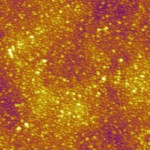Research
The research performed by RSSEL focuses on many diverse applications of materials modification.
Advanced Fusion Interfaces
Future plasma-burning magnetic thermonuclear fusion reactors impose several technological and scientific challenges. In addition to the complex alpha-particle physics, magnetic confinement and plasma stability control, materials science plays a critical role in the overall performance of these future devices. Target areas include: 1) low-Z coatings of adaptive, radiation-tolerant refractory nano-composites, 2) liquid-metal systems, 3) high-flux synergistic irradiation of candidate PFCs, and 4) in-situ tokamak PMI diagnostics. Prof. Allain has conducted pioneering work with in-situ surface chemistry analysis of plasma-material interactions (PMI) including lithiated graphite in close collaboration with the National Spherical Tokamak Experiment (NSTX) at the Princeton Plasma Physics Laboratory.
Advanced Functional Biointerfaces
Advanced biointerfaces can be achieved due to new chemical and/or nano-structured modulated surfaces that allow manipulation of biological environment at molecular level. Surface nanostructuring of conventional and advanced biomaterials is one of the keys to promote tissue growth, repair and regeneration, through favorable interactions with both cells and surrounding biological species. Our global hypothesis is based on exciting results obtained by our team, confirming the ability of directed irradiation synthesis (DIS) to tailor the functionality of biocompatible surfaces. Therefore, the aim of this theme is to modify the structure and/or chemistry of surfaces to produce designed nano-structures and controlled chemical species with specific target on cells stimulations mediated by designed new biointerfaces.
Nanostructured Functional Materials
 This research area is the broadest in Prof. Allain’s group but with the emphasis of using DIS and directed plasma nano synthesis (DPNS)-designed nanostructured materials with applications in: solar energy, nuclear detection, nanoelectronics, sensor technology and nanophotonics. For example work in solar energy research includes sustainable nanostructured semiconductors such as FeS and organic semiconductors (e.g. P3HT-C61 with integrated ZnO). In nanoelectronics, efforts include alkali doping of graphene and graphane for bandgap engineering with ultra-low energy alkali ions.
This research area is the broadest in Prof. Allain’s group but with the emphasis of using DIS and directed plasma nano synthesis (DPNS)-designed nanostructured materials with applications in: solar energy, nuclear detection, nanoelectronics, sensor technology and nanophotonics. For example work in solar energy research includes sustainable nanostructured semiconductors such as FeS and organic semiconductors (e.g. P3HT-C61 with integrated ZnO). In nanoelectronics, efforts include alkali doping of graphene and graphane for bandgap engineering with ultra-low energy alkali ions.
Multi-Scale Computational Irradiation Surface Science
 Various self-organized patterns including ripples and quantum dots can be induced by ion beam sputtering (IBS). Our group has developed a hybrid MD/kMC (Molecular Dynamics/kinetic Monte Carlo) multiscale atomistic model to model this interesting phenomenon. This model uses the crater functions, which are obtained by MD simulations, to model the prompt mass redistribution due to single-ion impacts. Defect migration, which is missing in existing models using crater functions, is treated by a kMC Arrhenius model.
Various self-organized patterns including ripples and quantum dots can be induced by ion beam sputtering (IBS). Our group has developed a hybrid MD/kMC (Molecular Dynamics/kinetic Monte Carlo) multiscale atomistic model to model this interesting phenomenon. This model uses the crater functions, which are obtained by MD simulations, to model the prompt mass redistribution due to single-ion impacts. Defect migration, which is missing in existing models using crater functions, is treated by a kMC Arrhenius model.
Sustainable Nanomanufacturing
Technological advancement constantly demands new and unique materials to suit a wide variety of needs. Many material properties such as hydrophilicity/phobicity, biocompatibility, and photonics can be drastically changed through surface modification. The demand to tailor properties in advanced materials that minimize damage to the environment and harnesses the unique properties natural resources provide, opens opportunities for directed plasma nano synthesis to combine “green” materials (e.g. cellulose, chitosan, etc…) with inorganic materials to establish novel properties. Our research aims to combine deposition and irradiation techniques to tailor the surface morphology and chemistry of materials to meet these needs on an industrial scale.

